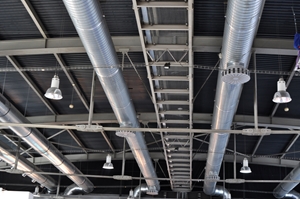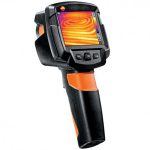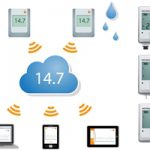Work is a sinch when it comes to testing indoor air quality or refrigerant levels. Why? Because you have the digital instruments needed to get the task done quickly.
There’s an easier way to measure HVAC airflow.
However, measuring air flow volume at HVAC intakes and outlets is far from simple. In fact, such a job can be quite frustrating, especially if you’re struggling with an analogue flow hood.
The stresses of the hard way
There are two ways to measure airflow: the easy way and the hard way. The latter requires you to use an analogue magnehelic gauge and two static pressure probes. To gain a semi-accurate reading, you have to drill two holes in your ductwork so the probes can fit.
Although magnets attached at the base of the probes will seal the hole in the ductwork, there are a couple of problems with this method:
- The probes can only cover a very small portion of the airflow.
- Ducts often contain swirl grilles to optimise air distribution within rooms.
In respect to the last point, a swirl grille causes the air to move around. Because a static pressure probe’s accuracy depends on whether it’s pointed towards the ventilation’s source, erratic airflow can offset readings.
Here’s a video of the magnehelic gauge-based process:
The simple method
What’s the easy way? Simply position a digital flow hood underneath an HVAC vent. With the testo 420 volume flow hood, it’s that straightforward. Weighing less than 3 kilograms, the instrument uses 16 measurement points that register not only absolute pressure, but also temperature, humidity and differential pressure.
Sporting 30 hours of battery life, our instrument can operate in temperatures between -5 degrees and 60 degrees Celsius, allowing you to work in almost any facility.
A step up from our convenient, accurate digital anemometers, we designed the testo 420 for HVAC technicians working in difficult environments. Ever come across a vent located in a high ceiling, forcing you to climb up a tall ladder to fumble with an analogue magnehelic gauge? Our digital alternative attaches to vents easily, allowing you to gain accurate readings from the ground.
In addition, if you want to ever save your readings for later reference, you can connect your smartphone to the flow hood through our app, available for download on Google Play or the Apple Store. That’s the beauty of having Bluetooth.
Given how easy it is to use the testo 420, there’s little reason to struggle with analogue magnehelic gauges and risk damaging ventilation.









 Reduce cooking oil costs while ensuring quality
Reduce cooking oil costs while ensuring quality Expert knowledge on CO2 monitoring
Expert knowledge on CO2 monitoring Refrigeration knowledge - in 3 modules
Refrigeration knowledge - in 3 modules



